Garden arches have been the most unnoticed yet indispensable tools that people use to turn boring yards into beautiful havens. These durable constructions are not only practical but also ornamental; they help people navigate your garden while bringing height and a hint of enchantment.
In this article, we present to you fantastic garden arch designs that you will definitely want to create in your outdoor space. From traditional wooden arbors covered with climbing roses to high-tech minimalistic designs, these arches will complement the garden and highlight its charm as key elements. We’ll arch our way to a more magical garden landscape with these 5 easy tips!
The Classic Metal Elegance
When it comes to garden arch metal designs, elegance and durability go hand in hand. A metal garden arch offers a timeless appeal that can complement both traditional and contemporary garden styles. These structures are typically made from wrought iron, steel, or aluminum, each bringing its unique characteristics to your outdoor space.

Key features:
- Intricate designs and scrollwork are possible with metal, allowing for ornate or minimalist styles.
- Weather-resistant finishes protect against rust and corrosion, ensuring longevity.
- Available in various colors, with black being a classic choice that makes greenery and flowers pop.
To maximize the impact of your metal arch, consider pairing it with climbing plants like clematis or jasmine. The contrast between the hard lines of the metal and the soft, flowing vines creates a stunning visual effect. For a low-maintenance option, powder-coated aluminum arches offer the look of wrought iron without the risk of rust.
Rustic Wooden Wonder
A garden arch with wood construction will give you a warm and natural look in an outside space. Woods are among the types that can easily blend in with the environment in your garden because they offer a very rustic charm unmatched by any other material. For durability, some of the strong materials include cedar, redwood, and pressure-treated pine.
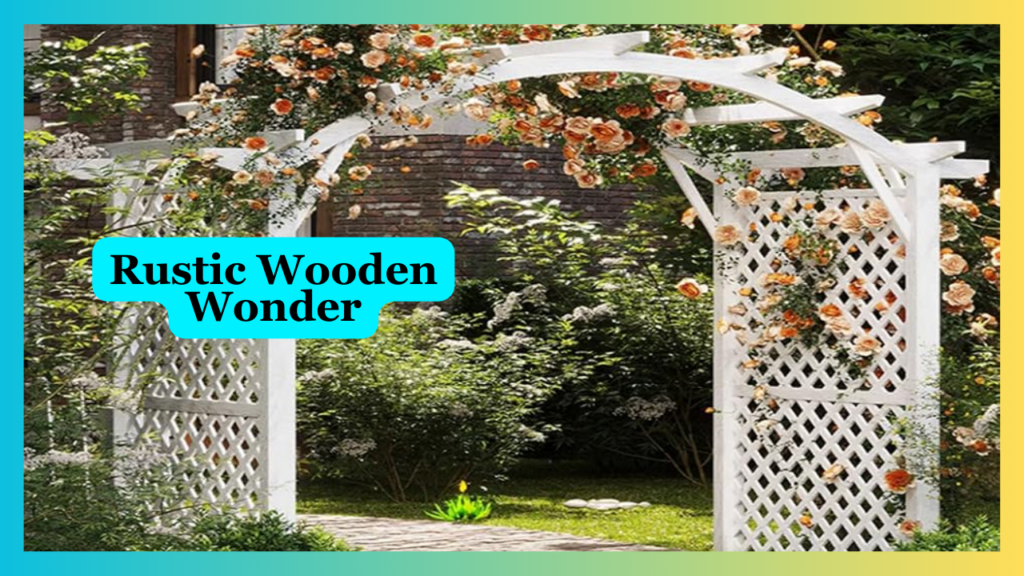
Customization options:
- Easily painted or stained to fit into your color scheme for the garden.
- Can be left to the mercy of the elements with a beautifully aging patina that will turn silver-gray.
- Permits easy alteration and repair. Thus, it is ideal for DIY enthusiasts.
With your wooden arch, you can train perfumed honeysuckle or wisteria to climb on it and create a beautiful natural view. The wood really makes the texture very easy to grip in climbing vines. This way, there can exist harmony between architecture and nature. Do not forget to seal the wood with any sealant that is suitable for this type of protection, just to keep the color and prevent moisture invasion.
The Romantic Rose Archway
Combining a garden arch and trellis creates the perfect support system for climbing roses, resulting in a breathtakingly romantic entrance to any garden space. This classic design has been a favorite in cottage and formal gardens alike for centuries, and it’s easy to see why.
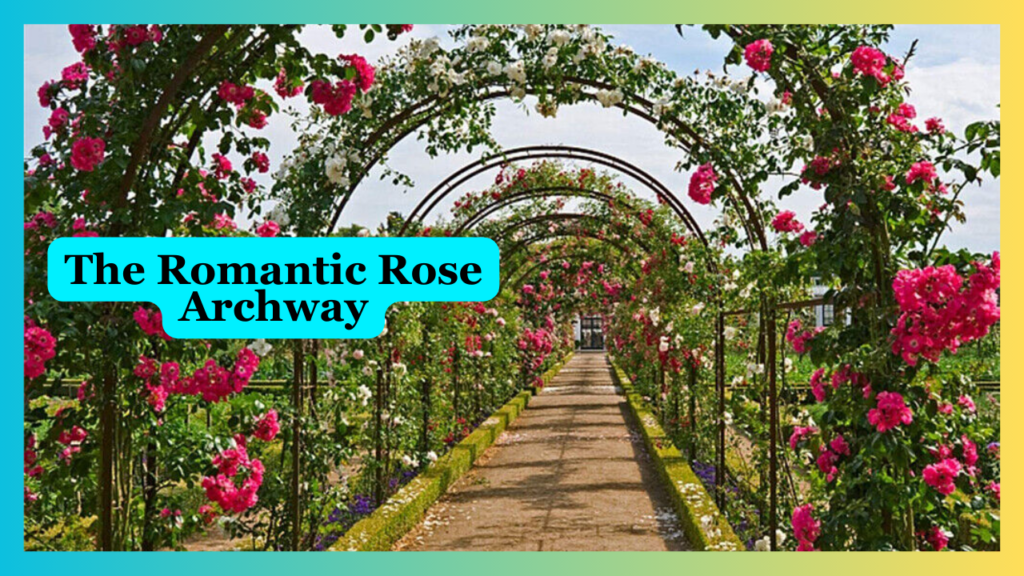
Creating your fairytale entrance:
- Choose a sturdy arch with an integrated trellis or attach a separate trellis to a simple arch.
- Select climbing rose varieties like ‘New Dawn’ for repeat blooming or ‘Cecile Brunner’ for a cascade of pink blooms.
- Ensure the arch is strong enough to support mature roses, which can become quite heavy.
To maintain your rose archway, regular pruning is key. Train the main canes along the arch’s structure, tying them loosely with garden twine. As the roses grow, they’ll create a lush canopy of fragrant blooms, transforming your garden entrance into a scene straight out of a storybook.
The Grand Entrance Gate
A garden arch gate defines areas within your garden while creating a beautiful focus; it is particularly useful when you want to have clear “rooms” in your outdoor area or to build suspense as one’s visitor walks through to discover what lies beyond.
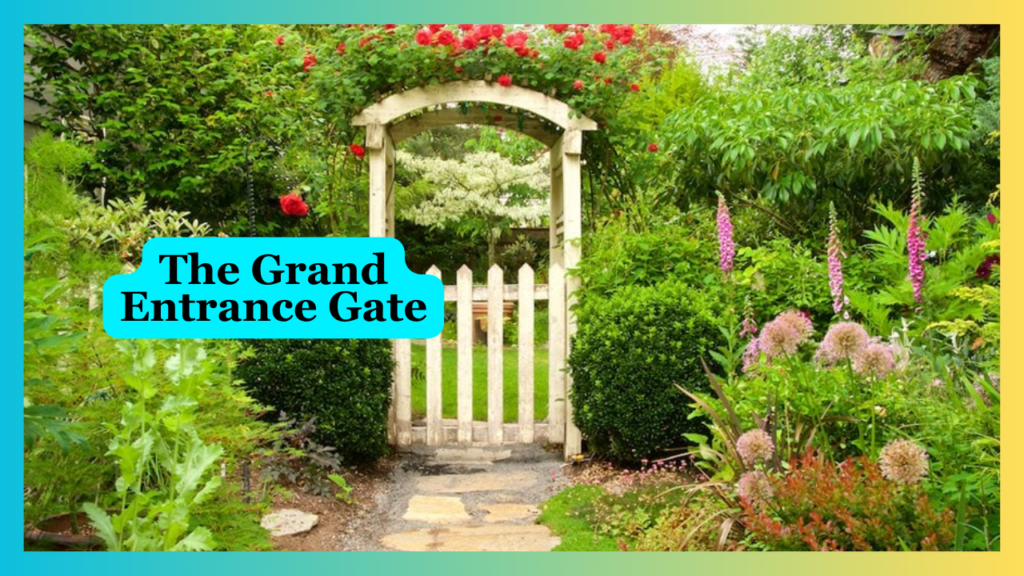
Blending functionality with beauty:
- Choose a design that will complement the architecture of your home and the style of your garden.
- Practical factors such as which way a gate is likely to open and whether it needs any form of latch should be taken into account.
- Attach the gate to the existing fencing or hedges to maintain consistency.
Planters or statuary matching the arch gate are a really grand flanking entrance. Climbing plants can add a softening structure and melt this into the garden landscape more easily. Just be sure nothing obstructs the operation of a gate.
The Living Green Tunnel
Create a lush, natural passageway by using fast-growing vines on a sturdy arch or a series of arches. This living green tunnel not only provides a magical journey through your garden but also offers shade and coolness during hot summer months.
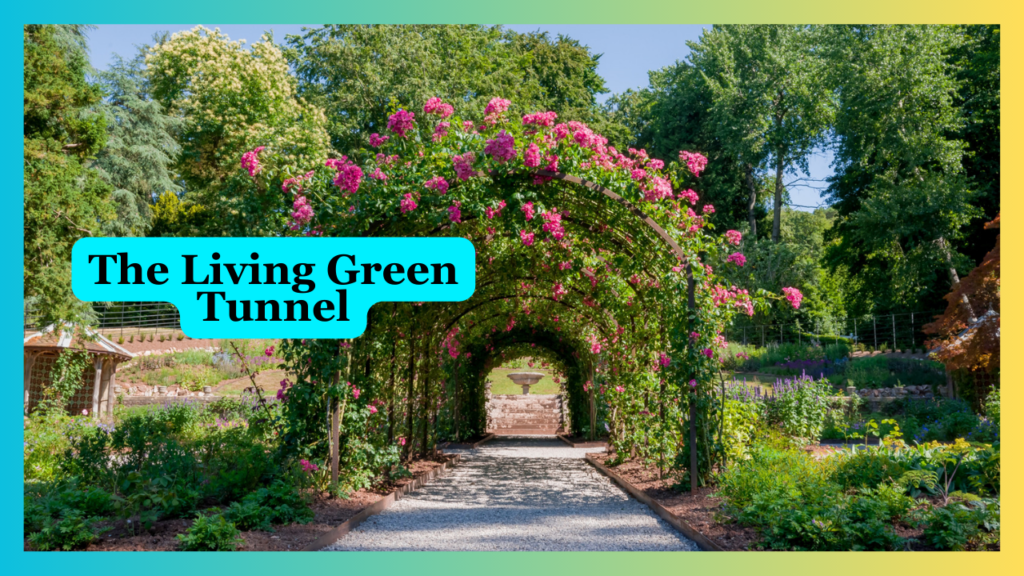
Creating your green oasis:
- Use multiple arches in succession to form a longer tunnel effect.
- Choose vigorous climbers like grapevines, kiwi vines, or passion flowers for quick coverage.
- Ensure your arch structure is robust enough to support the weight of mature vines.
To maintain your living tunnel, regular pruning is essential to keep the passageway clear and prevent the vines from becoming too heavy for the supporting structure. Consider incorporating seating at one or both ends of the tunnel to create a peaceful retreat within your garden.
The Japanese-Inspired Torii Arch
Bring a touch of Eastern tranquility to your garden with a Japanese-inspired torii arch. Traditionally found at the entrance to Shinto shrines, these distinctive structures have become popular elements in contemporary garden design, offering a perfect blend of cultural significance and architectural beauty.
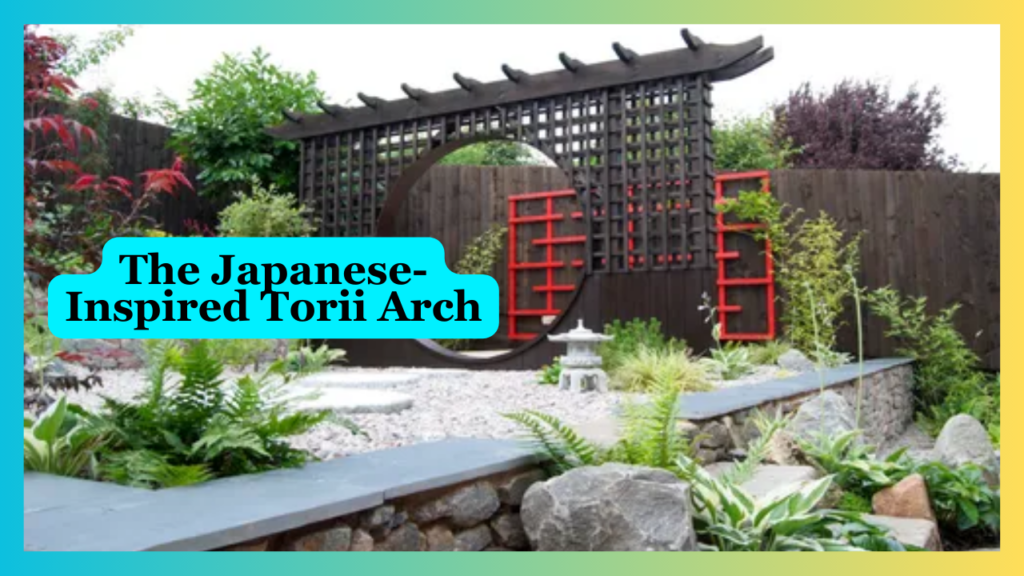
Key design elements:
- Characterized by two vertical pillars topped with two horizontal crossbeams, with the upper beam (kasagi) curving upward at the ends.
- Typically painted in vermillion red, though modern interpretations may use natural wood tones or black finishes.
- Can be scaled to suit any garden size while maintaining authentic proportions.
To create an authentic Japanese garden experience, consider surrounding your torii arch with elements like stone lanterns, bamboo, and carefully pruned evergreens. A gravel or stepping stone path leading through the arch adds to the meditative quality, while Japanese maples or cloud-pruned shrubs can provide the perfect accompaniment. For a more contemporary take, combine the torii with modern landscaping elements while maintaining its essential form.
The Whimsical Willow Arch
For a truly enchanting and eco-friendly garden feature, consider a willow arch. These living structures bring a magical, organic quality to any outdoor space, perfectly complementing cottage gardens and natural landscaping styles. Made from flexible willow branches, these arches can be shaped and woven to create unique, artistic designs.
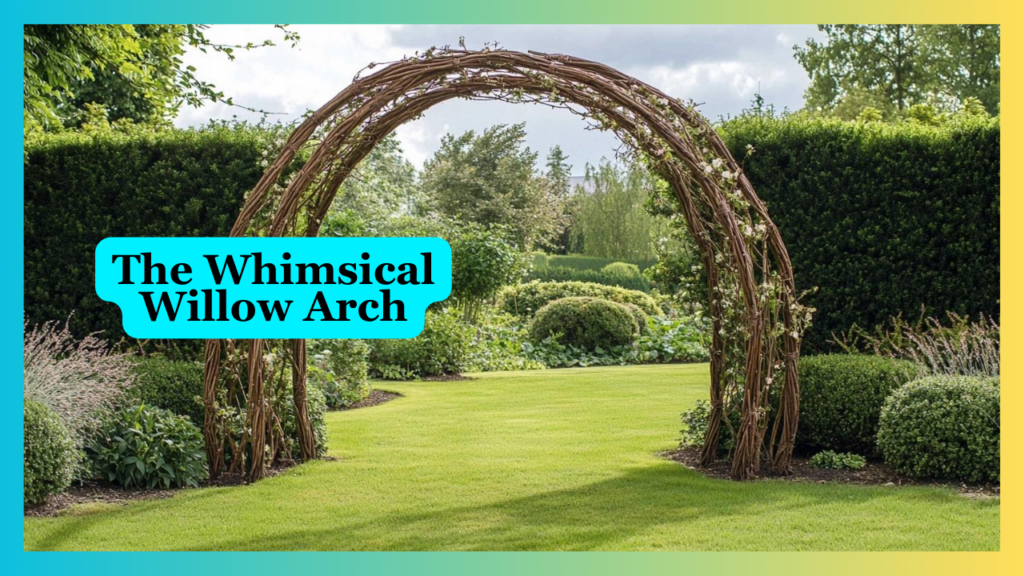
Creating natural magic:
- Use fresh willow rods that can take root and grow, forming a living structure.
- Incorporate different varieties of willow for interesting color and texture combinations.
- Shape and weave the branches while they’re still flexible to create intricate patterns.
The beauty of willow arches lies in their ability to evolve with your garden. As the willow grows and leafs out, it creates a dynamic, changing display throughout the seasons. In spring and summer, the arch comes alive with fresh green growth, while winter reveals the beautiful structure of the woven branches. For added whimsy, weave fairy lights through the branches or plant woodland flowers at the base.
For maintenance, regular pruning in late winter or early spring helps maintain the desired shape and encourages new growth. The living willow will continue to grow and strengthen over time, creating an increasingly sturdy and established feature in your garden. Consider planting shade-tolerant plants beneath the arch, as the willow canopy will create dappled shade perfect for woodland species.
Garden arches are more than just decorative elements; they’re transformative features that can elevate any outdoor space from ordinary to extraordinary. Whether you choose the timeless elegance of metal, the natural warmth of wood, or the living beauty of willow, these structures add vertical interest, create focal points, and guide movement through your garden.








